The pieces presented here are part of my mother’s collection of ceramics from the village of Lai Thieu in Vietnam. My mother acquired them in the 1970s, during the Vietnam War, while she was living in Saigon, today known as Ho Chi Minh City. The city’s name was changed after the war and the reunification of Vietnam, the name Saigon being too closely associated with colonial and imperial powers. But for my mother, it will always be Saigon. She had known Saigon’s glory days. Going back would be too painful she says. There are too many memories. And too much suffering in the years that passed. She was lucky enough to have left before the Fall of Saigon in April 1975, as tanks entered the city’s presidential palace. But for all those that she knew and loved who did not and could not leave, and those who the war had taken away, the pain in her heart will always be there. They were family, friends, photographers, journalists… some of them were artists, such as the man who made these pieces.
My mother cannot recall his name. It was too long ago she says, or maybe she never knew it. In any case, one never calls someone by one’s name in Vietnamese. She would go to the village of Lai Thieu almost every weekend. If not to buy something for herself, for the household she shared with my father, at the time a correspondent for Newsweek Magazine, she would bring other journalists with her, each one buying a few pieces for their own homes and collections. Among them were Jean‑Louis Arnaud (whose collection now sits in his home in the village of Suzette near Avignon), Charles‑Antoine de Nerciat and Philippe Debeusscher, all from Agence France-Presse (AFP).
My mother would usually go with Mr. Hanh, the company driver, in Newsweek’s white Mazda (the car they would also take to go to the beach at Cap Saint Jacques, today known as Vung Tau), taking Route 1 northwards on a road with heavy traffic; or she and her friends would take the AFP car, the Peugeot 404 in which Paul Leandri, an AFP correspondent, would later meet his fate in 1975, when the South Vietnamese police assassinated him, firing hundreds of rounds at the AFP car as it was leaving the Saigon police headquarters. It usually took her and her friends about thirty minutes to an hour to reach Lai Thieu, a village famous for its skilled ceramic artisans and workshops, for its many fruit orchards and for being adjacent to a village highly reputed for its fresh rice noodles (bun). It was believed to be an ancient village founded by the Chinese, who settled there for the quality of the clay and for its location by the river, which made it easy to export their ceramics.
After the ceasefire of the 1973 Paris Peace Accords, no one could go back there, as the journey was deemed too dangerous. In any case, there was nothing to see or buy there anymore, as most of the old Sino-Vietnamese artisans had died or fled, and with them the secrets of their art. As for the few young men who had learned their skills, most had been drafted into the South Vietnamese army (ARVN), which was the case of the artisan she always bought her ceramics from, or had joined the Vietcong, either by force or by choice. So that was it. The ceramic workshops closed down, as the village of Lai Thieu became empty and lifeless.
After the war, people opened new ceramic workshops, but none were able to achieve the right blends of colour pigments (to make that perfect, deep, dark yet light emerald green), nor could any of them manage to reproduce the same type of glaze or the same kind of ‘cracked’ ceramic effect. While the production and trade of ceramics has been increasing over last couple decades, none of those found today can compare to the ceramics from the old Sino‑Vietnamese workshops of Lai Thieu.
Some of the ceramics presented here from my mother’s collection, all of which are made of clay, are pieces that were meant for temples, such as The Pagoda of the Lady Thien Hau (Chua Ba Thien Hau) in Cholon (also known as Saigon’s “Chinatown”). Temple officials would commission these pieces to the ceramic workshops of Lai Thieu, where, luckily for my mother and all of those she took with her, some items were produced in surplus.
The dragon depicted below, which is impressive in both size and detail, would usually be installed on the roof of the temple with a second dragon. Both dragons would form the apex of the pagoda, their heads in the middle, with a ceramic ‘ball of fire’ between them, and their tails reaching out to the edge of the roof.
Also depicted below are a phoenix (phung), symbol of peace, and the mythical Qilin (ky lan), often translated as ‘ unicorn’, representing wealth and prosperity, two of the four sacred animals of Vietnam with supernatural powers (tu linh). The two other sacred animals of Vietnam are the dragon (long), associated with power and fertility, and the turtle (qui), symbol of longevity. The fish (ngu, con ca) depicted here is also a powerful animal representing longevity. The three pieces below would usually be placed at the corners of the temple’s roof.
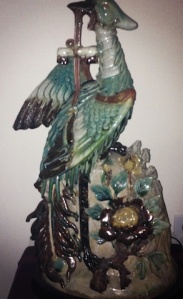
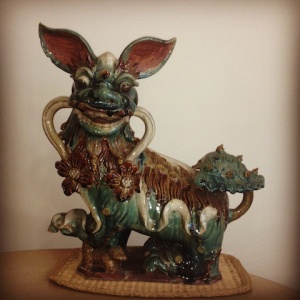
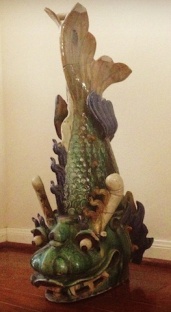 As for these ceramic stools, these would be placed in the temple’s garden and would have potted plants placed on top of them. The ones here are not as impressive in size as the ones she used to have and as those that could be found at the Continental Hotel in la rue Catinat (known today as Dong Khoi).
As for these ceramic stools, these would be placed in the temple’s garden and would have potted plants placed on top of them. The ones here are not as impressive in size as the ones she used to have and as those that could be found at the Continental Hotel in la rue Catinat (known today as Dong Khoi).
This group of ceramics includes a goldfish, two cabbages and two frogs. These are household items and are meant to be hung against the wall (possibly to hold chopsticks in them).
As for these elephants, they are meant to go in pairs and would often be placed at the household entrance, with one elephant on each side, or as stools for potted plants. Interestingly, these elephants, which were made in Lai Thieu, were the inspiration for many knock-offs that American GIs would purchase at the Bien Hoa ceramic factory, north of Saigon. These elephants became ‘must‑have’ souvenirs for GIs to ship back home in the US, earning them the name BUFE, pronounced buffy, an acronym for Big Ugly Fucking Elephant. The ‘ugly’ part stems from the fact that the Bien Hoa knock-offs were not nearly as beautiful as Lai Thieu originals. Those who sold BUFEs to GIs in Bien Hoa would have these ‘Big Ugly Fucking Elephants’ packed and ready to go in crates to be taken across the Pacific Ocean.
Here we have a series of jars which were used to stock salt and pork lard, as the latter was used for cooking instead of oil at the time. The first two bowls depict ‘The Seven Sages of the Bamboo Grove’ (Truc Lam That Hien). The men depicted here are in fact ‘wise men’, which we can deduce from their long beards and their hats and robes, which were only worn by the educated literati. These ‘Seven Sages’, all Taoist scholars, writers and musicians, are drinking tea, some are talking to each other, and one is even playing the flute. The last bowl, a typical Sino‑Vietnamese design, is made for dishes made with bun noodles. The lower half of the bowl, where it narrows, is meant to contain the perfect amount for a portion of bun. The neighbouring village was famous for making fresh bun noodles.
The objects depicted here are only a few among many in my mother’s collection, a reminder of her weekends spent in Lai Thieu with many friends. Some have passed and some are still with us. To them, the excursions to Lai Thieu were an escape from the realities of the war, away from the politics and the military. It was a journey back in time, watching the villagers make and sell ceramics among the fruit orchards. Jean-Louis Arnaud fondly recalls his trips to Lai Thieu in his book Saigon d’un Viet Nam à l’autre (Editions Gallimard, 1977). He also coined a nickname for my mother, ‘la mère des dragons’, from her discovery of the ceramic temple dragons. The old workshops of Lai Thieu, though part of the village’s landscape and livelihood at the time, were not great in numbers to start with, as there was no demand for this traditional art form among the Vietnamese. The clientele and admirers of these ceramics were mostly foreigners. In Bing Duong Province, where Lai Thieu is located, the ceramics trade and production, once a lifetime of skills passed down from one generation to the other, have been replaced by pottery factories producing brightly coloured modern ceramics, which today represents a lucrative export industry.
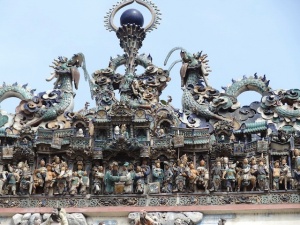
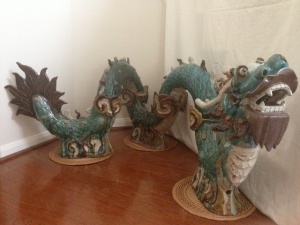
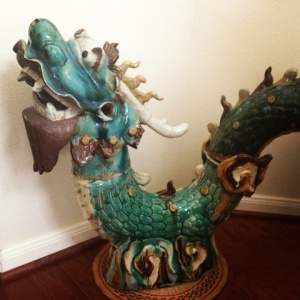
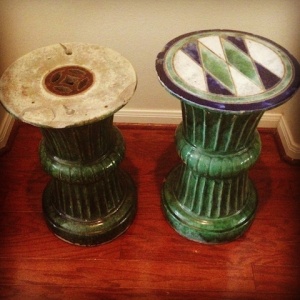
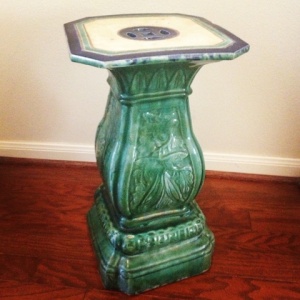
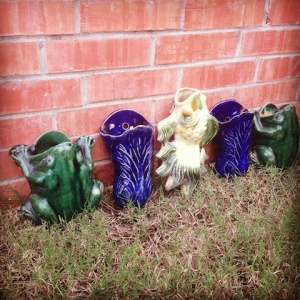
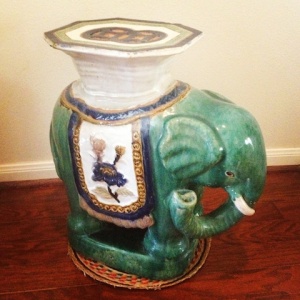
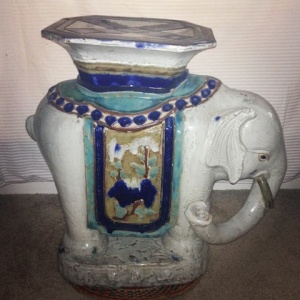
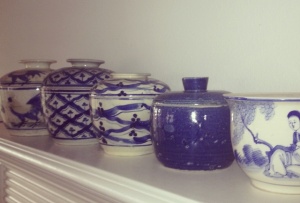
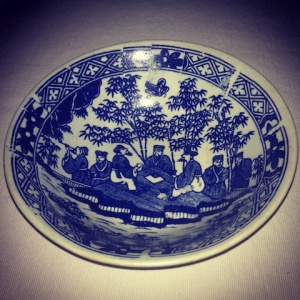
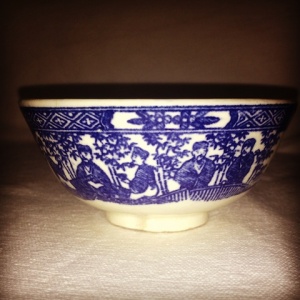
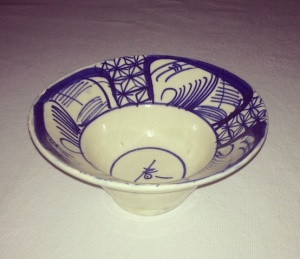
Wow very interesting .
Linh, your story brings back vivid memories of my childhood. My parents ‘visited’ Saigon in the early 60’s. My mother was searching for orange elephants with gold howdahs at Thanh Le’s. She was not allowed to go to the market because of snipers. She succeeded in getting her elephants, alas, they were not orange, but white. They now adorn my living room…I have several pairs (as they were purchased by others for my mom after her Saigon trip, some were ‘too small’ and some were ‘too tall’) for all occasions. Thank you for identifying the ‘bun’ bowl…I have seen these at house sales and wondered what they were for…now I know. Fantastic dragon piece!!! I hope you return to writing your blog of your childhood.
Dear Puller,
Thank you for sharing your experience. I was hoping to continue this blog thematically, with the next post being about my parents’ Burmese lacquerware collection or Vietnamese woodcarvings, but I have since moved abroad for work so am unable to take photos and continue the blog. I will definitely post something next time I visit them :)
Thanks for updating me. I have two of the ceramic elephants from my father. In this case, though, they are very small (about 10 inches high and 12 inches long at the base). So I guess they are not buffies but “luffies” (Little etc etc). In any event, they have “souvenir and Viet Nam” on the bottom of the base. I would guess these probably have little if any value since I would assume that the ones made in Lai Thieu have another identifier?
Dear John, Thank you for your comment. I would need to see a photo of your elephants to know approximately where they were made/obtained from. But from what you have written, from the “stamp” at the bottom written in English, it would seem that they could be part of those made in mass production for GIs to take home. They were made near Saigon and sold as souvenirs.
My Colleague the late Horst Faas helped me buy a couple of white elephants (60cm high and flown to Singapore as carry-on baggage!!) — are they Buffes do you think? Can one leave them outdoors in the British weather?
I would need to see what they look like and when they were flown out of VN, but amazing they went through as “carry-on” LOL. Whether they are genuine or not, I believe they will be absolutely ok outdoors in the British weather. If they can last in the tropics, they can certainly last there
Have emailed 2 photos. Cant say when precisely but gurss it eas 1969 —om Ait Vortma
Vietnam
I spent July 1 to December 5 of 1973 in Saigon living in the Palace Hotel. During that time I negotiated the purchase of 16 tons of confiscated opium from the ROV.
Nixon had put the government of Turkey out of the poppy-growing business and my company, Mallinckrodt, a legal manufacturer of bulk narcotics was in desperate need of opium to make up the shortage. Vietnam was just one of the countries I am including in my book, “Reflections of an Opium Buyer” which is in progress.
While in Saigon I purchased two white “Buffies” 21″ x 24″ x 10inches at Thanh Le and had them crated and put on the Flying Tigers charter 707 which flew the opium back to St Louis Missouri.
The Buffies have graced our front entrance with a glass top table holding some other treasures since 1973.
My only problem now is that at 91 all three of my children have asked for them to be left to them.
I was hoping to buy some more but now I realize that is impossible.
I will now have to find another solution.
Everyone who visits the house remarks on them.
Hi Robert! Apologies for the late reply. Indeed they don’t make them today like they did back then. We sadly lost one during one of our many cross-continental moves. Good luck with your book, and with deciding where the Buffies go :)